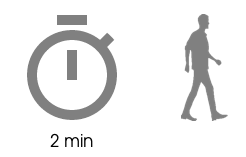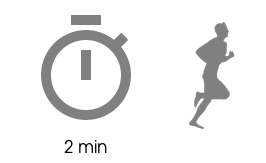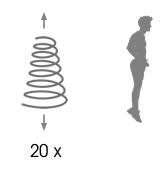Baselining is the best way to get a normal data set for each person - you can use baseline assessment data to track progress and set goals.
Getting started with baselining
Having a solid baseline is a key component of tracking performance improvements and rehab progress - by comparing new data to a baseline data set, abnormalities can be detected before they turn into serious issues. Healthy baseline data can also serve as a benchmark for return to play readiness following injury. We suggest starting with this baselining assessment for all new people you add to your organization.
Baseline testing
To get a representative set of baseline data, we recommend running the baselining assessment at least twice, either on the same day or two consecutive days. The full set of activities takes about ten minutes and activities should be done before strenuous exercise, keeping the same order of activities each time. To keep the baseline current after the initial testing is complete, repeat the activity set once a week.
It's also helpful to mark the first day of baselining with an Event in the person's profile - this will enable you to create Review timelines starting with the healthy baseline to better identify deviations. To read more on how to create and use events, click here.
Baseline assessment set
Consult the activity instructions video on the plantiga.io stopwatch for demonstrations on how to perform the baselining activities.
Walk & Run Assessment
- 2 minute walk - Walk at a brisk pace for two full minutes.

- 2 minute run - Run at ~60% of max effort for two full minutes (add a 2 minute run at ~40% and ~80% max effort for additional insights.)

Jump assessment
- 5 Consecutive Countermovement Jumps - Starting from a shallow squatting position, jump with hands on hips and feet shoulder width apart for a total of five vertical jumps. Land each jump with the same depth as in the starting position and immediately jump up again, trying to maximize jump height. The majority of the power should come from above the knee.

- 20 Cyclic Jumps - Jump with hands on hips and feet shoulder width apart for a total of twenty jumps. Try to minimize ground contact time and maximize vertical jump height, keeping the legs fairly straight while in the air. The majority of the power should come from below the knee.

- 3 Single Leg Jumps for Height (on each leg) and 3 Single Leg Jumps for Distance (on each leg) - Standing with the feet together, lift one leg off the ground and jump as far or as high (depending on the jump) as possible with the other leg, while still being able to keep balanced on landing. Return the lifted leg to the ground, lift the opposite leg, and repeat, three times on each leg. When performing the Single Leg Jump for Distance, walk backwards between jumps if more horizontal distance is needed.

For each activity, follow the instructions for Collecting Data - make sure the activity starts and stops with the person standing still for 5 seconds.
Make sure to start and stop a new stopwatch for each activity.
After each activity, stop and save the stopwatch and when the Baseline is complete, upload the data. If the walk or run activities are performed on a treadmill, this should be noted along with the speed and incline settings. Suggested speeds are 5km/hr for the run and 3km/hr for the walk.
This routine should be modified to suit injured people if any particular activity cannot be safely performed. The approval of a physiotherapist or physician should be obtained before an injured person performs any baselining activity.
Beyond baselining
After baselining is complete, routine data collection can begin. Data can be collected on any rehabilitation exercise, training session, or game. Baseline data can be used as a starting point from which to improve performance or a goal to reach as rehabilitation progresses - keep an eye on how routine data compares to baseline data to get the most value out of data collection.
.png?height=120&name=Plantiga%20lockup%20black%20(1).png)